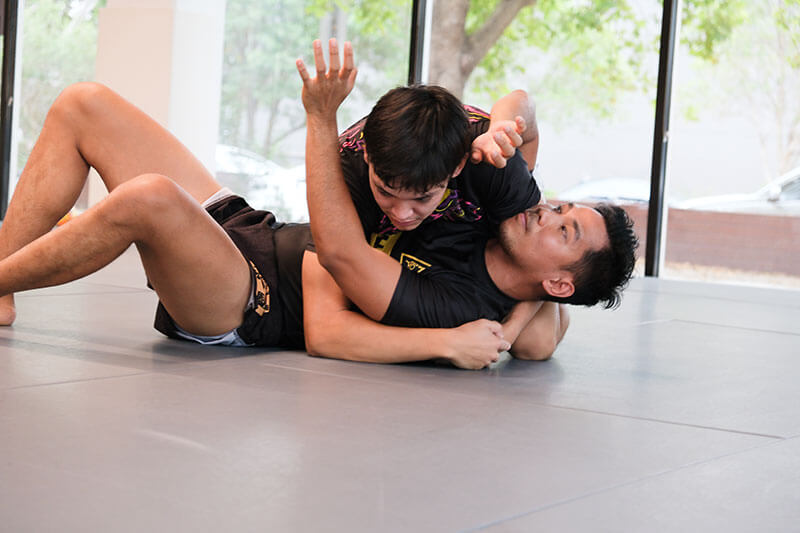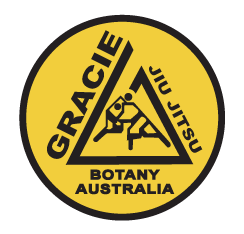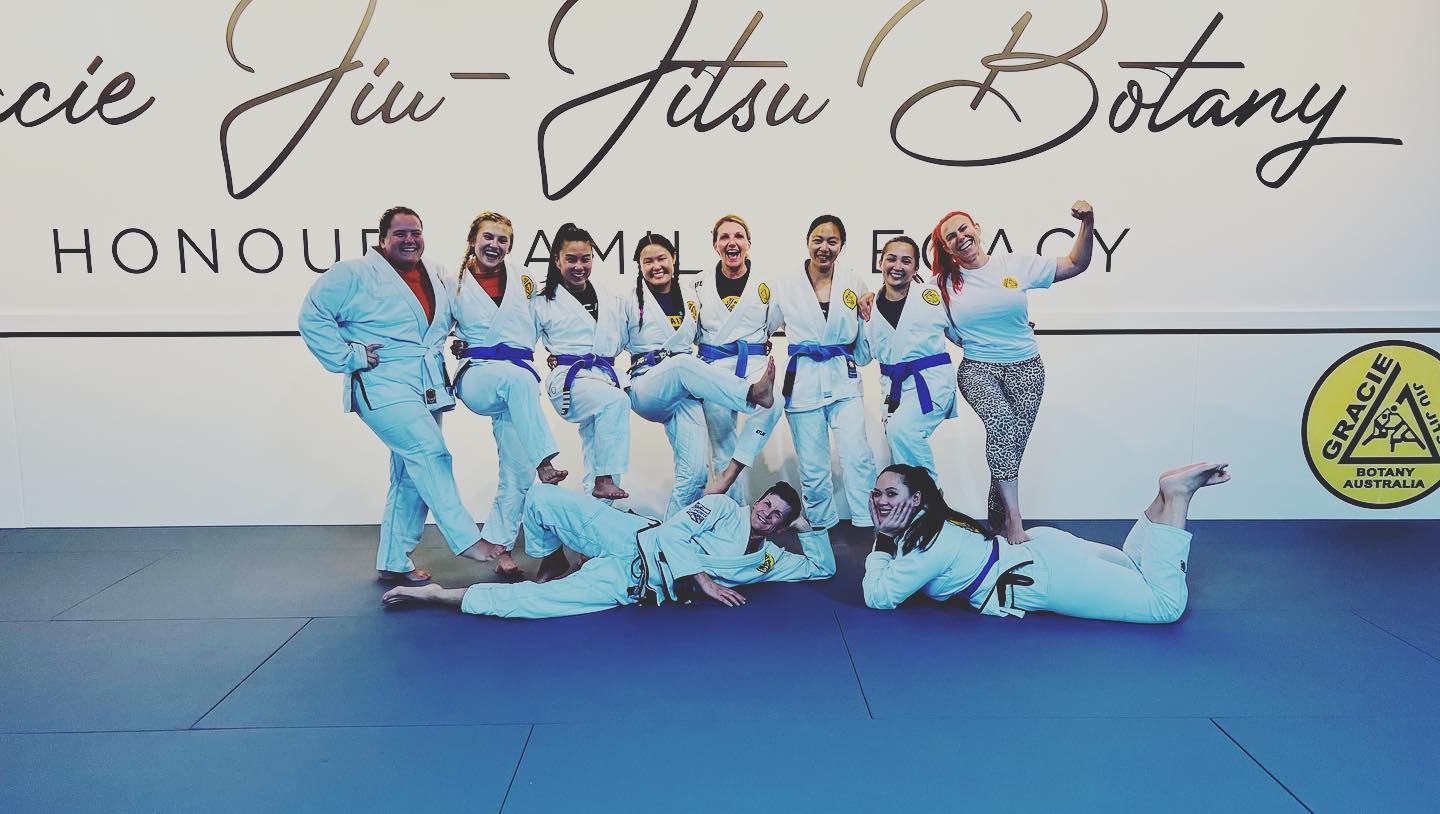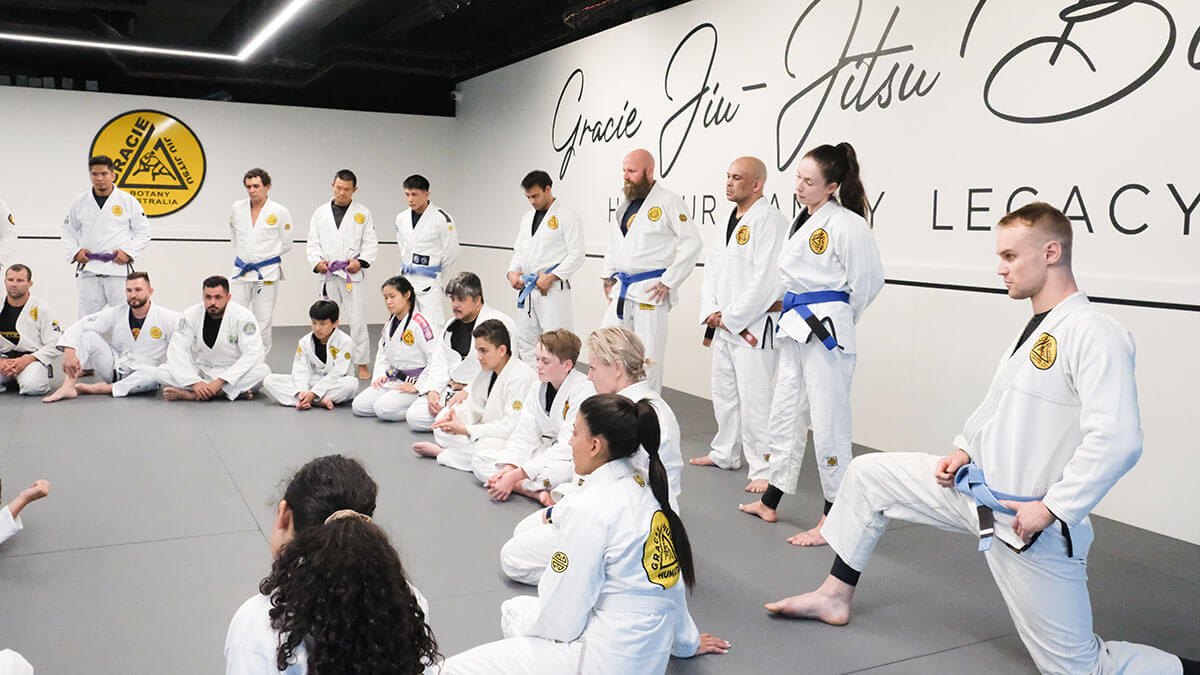When you think of martial arts, you probably envision an academy or dojo full of people in Gis. The thick white kimonos are part of many famous martial arts, including Judo, Taekwondo and Karate.
Brazilian Jiu-Jitsu is no different. There’s no question about it: Gi training is fundamental to BJJ. But No-Gi, the other style of Jiu-Jitsu training, is key too. It’s important for students to train both. That’s why at Gracie Botany, our BJJ academy in the eastern suburbs, we host four No-Gi classes a week.
There always has and always will be debate within BJJ about which style is better, or more important. Those debates will no doubt rage on for the foreseeable future. What you need to know, as a hobby practitioner, is that both Gi and No-Gi BJJ teach distinct skills that are well worth learning.

Wait, what’s Jiu-Jitsu again?
BJJ is unique among martial arts in its focus on ground-based grappling. At academies like Gracie Botany, you’ll learn how to take an opponent down, establish a dominant position, and then submit them. We don’t use strikes in Jiu-Jitsu. Instead, your weapons will be choke holds, arm locks, leg locks and other holds.
The foundational point of BJJ is that it should allow a smaller, weaker person to defend themselves against someone who’s bigger and stronger. This is achieved first through taking someone to the ground, where they’re less able to utilize a size or strength advantage. Students are taught techniques that require timing, strategy and leverage to use, rather than athleticism. With sufficient BJJ skill, technique can overcome vast size differences.
A key part of Jiu-Jitsu is its focus on sparring, or “rolling” as we call it. The final 15-20 minutes of each adult lesson – our kids martial arts classes feature different styles of training – are dedicated to rolling. Here you’ll train against your class mates, employing the techniques you learn in class. You quickly find out which techniques work for you through these sparring sessions.
This is again different from other martial arts, where proper sparring is only done after months or years of practice. In several strike-based martial arts, sparring is only done with heavy protective gear. Because Jiu-Jitsu features no strikes and few slams, injury risk is greatly mitigated. This allows for sparring at high intensity and resistance.
What’s the difference between Gi and No Gi?
It’s simple, at least on the surface. In Gi classes, students train in thick Gis and their ranked belt. In No-Gi, students train in a rashguard and grappling shorts – similar to what you might expect to see surfer wear.
The implications are far more than cosmetic. The Gi affords far more opportunity for you to grip your opponent. The sleeves, collar and pants can all be yanked and held, opening up more opportunities for sweeps and submissions. In contrast, No-Gi training only allows you to hold onto your opponent’s body. You can hold their wrist, for instance, but gripping the sleeve of their rashguard is not permitted.
Gi training is typically slower, as the friction of the Gi and the grips it provides can bring the pace down. By contrast, No-Gi is more slippery and dynamic, and involves more scrambles for position.
Both styles have benefits. Gi training is often better for Jiu-Jitsu beginners, because strong grips make many techniques easier to perform. Because it’s easier to pull your opponent in Gi training, again because of the collar and sleeve grips, students are able to better appreciate the importance of leverage.
At the same time, exclusively practicing Gi can make you rely on those grips. There are many self-defence crossovers of Gi techniques, for instance if an assailant is wearing a jacket or even a collared shirt. Adding in some No-Gi lessons, however, can acquaint you with the feeling of grappling someone who’s just wearing a T-shirt, or no shirt.
And while Gi training is a great workout, the scrambles and dynamism of No-Gi classes will do wonders for your cardio.

What’s better?
How much you balance out Gi and No-Gi classes depends on your goals.
If you do Jiu-Jitsu as a hobby, then you should train whichever style is more fun. Some people enjoy the strategizing that Gi training’s slower pace allows for. Others love the rapid action of No-Gi classes.
If you’re hoping to be a BJJ competitor, you’ll need a strong mix of both. Some competitors like to specialize in one form over the other, though this is typically only at very high levels of competition.
The only circumstance in which it’s recommended you train exclusively No-Gi is if you’re training Jiu-Jitsu for the purposes of mixed-martial arts fights. Since all MMA fights are fought in just fight shorts, UFC hopefuls are far better off training No-Gi.
If you’re interested in training Jiu-Jitsu, come into Gracie Botany in Sydney’s eastern suburbs for a free trial lesson.



